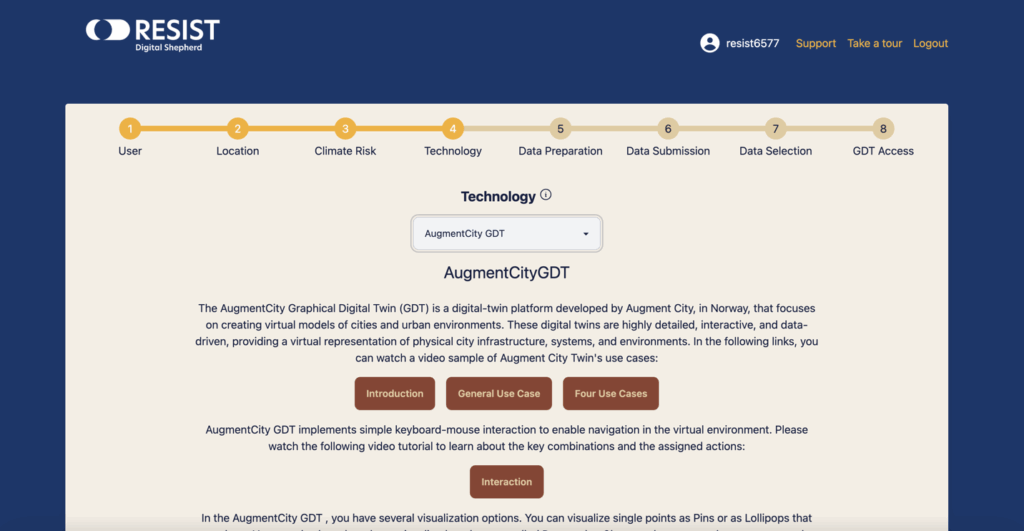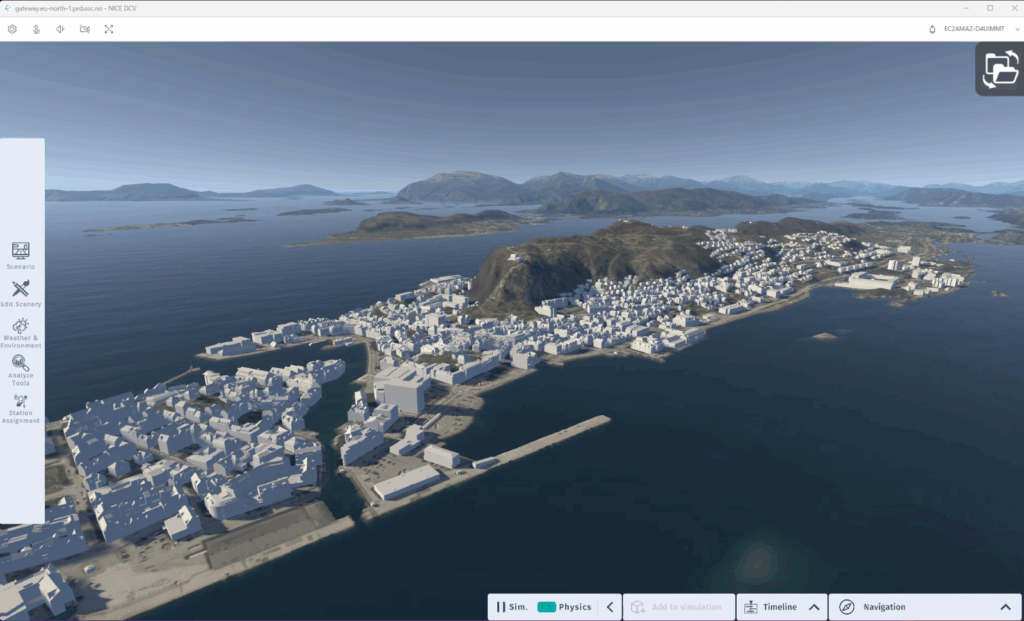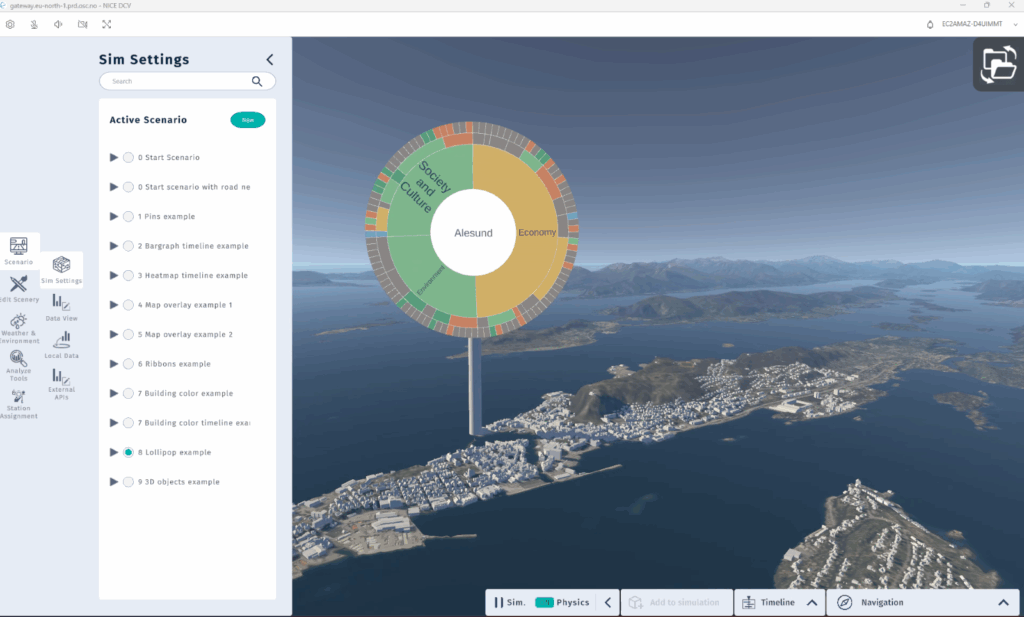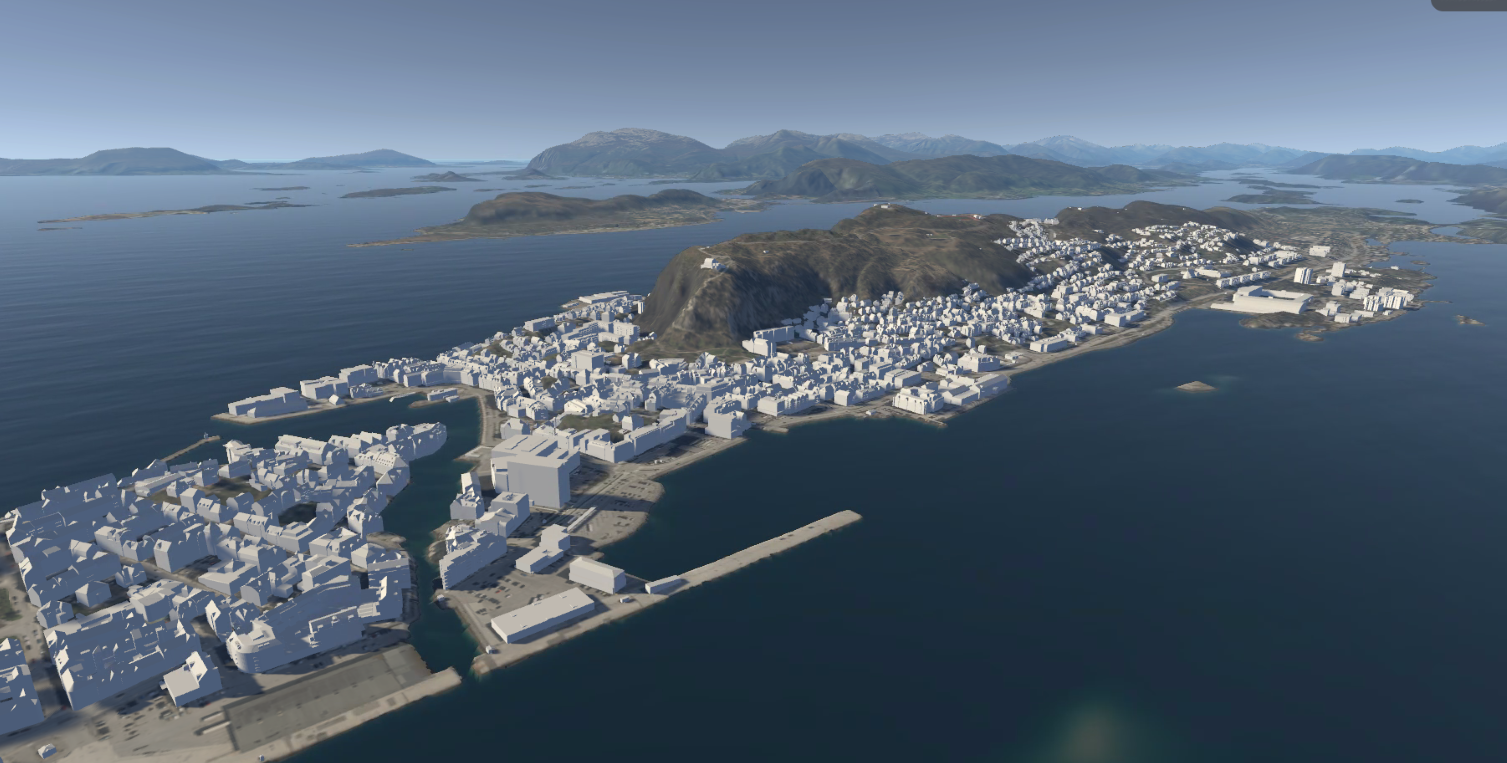Across Europe, regions are facing the urgent challenge of adapting to a changing climate. From rising sea levels to extreme weather events, the risks are growing—and so is the need for smarter, faster, and more collaborative solutions. The RESIST project is at the forefront of this transformation, leading the way in the digital transition of climate change adaptation. A cornerstone of this effort is the use of Graphical Digital Twins (GDTs)—interactive, data-driven simulations that help regions visualise climate risks and test solutions in a virtual environment before acting on them in the real world.
Central to RESIST’s digital approach is AugmentCity, a key technology partner, whose GDT platform allows local and regional authorities to map out vulnerabilities, explore interventions, and engage stakeholders in entirely new ways. To support this ecosystem, SINTEF’s Digital Shepherd has been developed as a smart onboarding and training hub, enabling partners across Europe to transform complex climate data into powerful visual insights, ensuring that adaptation strategies are not only well-informed but also collaborative, scalable, and ready for impact.
These digital tools and methodologies were showcased during a dedicated event on the Digital Transition in Climate Change Adaptation, where RESIST project partners came together to share their approaches and innovations. The event highlighted how data, digital twins, and collaborative tools like Digital Shepherd are reshaping how European regions tackle climate resilience. Read more about the event here.
The RESIST Digital Shepherd
Digital Shepherd acts as a central data onboarding and training hub within the RESIST ecosystem. Its purpose is to help regional stakeholders—from municipalities to research institutions—prepare, validate, and integrate climate-related data into GDT platforms. Through an intuitive eight-step user-guided interface, users are able to select their region, define relevant climate risk scenarios (such as flooding), choose their preferred GDT technology, and access tailored training materials and data templates. The platform then guides the user through the process of uploading or linking to relevant datasets, readying the information for digital simulation and visualisation.
The power of Digital Shepherd lies in its ability to bridge the gap between climate data and digital simulation. Through seamless integration with the GDT platform, the data prepared within Digital Shepherd can be visualised in layered, multi-dimensional formats, allowing regions to simulate and assess climate adaptation strategies in a virtual environment. This structured and unified process enhances data accessibility, interoperability, and usability, ultimately empowering RESIST partners to make evidence-based decisions for climate resilience.

Collaboration Made Simple
The platform is designed to foster collaboration across different sectors and expertise levels. Regional profiles allow multiple stakeholders—such as urban planners, researchers, and local authorities—to jointly manage datasets and collaborate on visualisation and analysis. Its simple, guided interface makes it accessible to a wide audience, regardless of technical background, while built-in support tools ensure that even first-time users can independently navigate the system. This reduces dependency on highly specialised “superusers” and promotes knowledge retention and organisational resilience over time. The platform integrates built-in support and onboarding tools (like guided tours) to help users understand the system without extensive training.
All of these features promote cross-sector collaboration and ensure that the climate resilience strategies developed are not only effective at the local level but also replicable and scalable across different regions in the near future.
Graphical Digital Twins at the Heart of RESIST
One of the key partners of RESIST is AugmentCity, a technology provider and a leader in graphical digital twin solutions. AugmentCity works alongside ERRIN, KU Leuven, and SINTEF as part of the project’s horizontal support team. Its GDT platform is the primary visualisation tool used by RESIST, enabling regions to digitally map out pilot areas, understand vulnerabilities, and test innovative climate solutions in a fully interactive 3D environment.
These graphical digital twins are much more than visual aids—they are dynamic, data-rich simulations that model how various climate scenarios may impact both environmental and societal systems. Through these digital representations, regions can test, refine, and validate adaptation strategies before implementation in the real world. By simulating different interventions, from nature-based solutions like green infrastructure to flood control measures and urban cooling systems, stakeholders gain a clearer understanding of the potential impacts, benefits, and trade-offs. This not only helps avoid costly or ineffective outcomes but ensures that strategies are grounded in rigorous analysis.

Real-World Testing Examples
In practice, the platform has already proven its versatility. In one scenario, a regional planner, working alongside a technical expert, used publicly available environmental data—sourced from the RESIST Repository developed by KU Leuven—to model flood risks in their area. Digital Shepherd provided the tools to prepare and onboard the data, which was then visualised in AugmentCity GDT for stakeholder discussion and strategic planning. In another instance, a municipal officer, without any technical assistance, used the platform’s training resources and templates to upload flood data for their region and proceed to visualize them directly in the AugmentCity GDT.
These examples illustrate how the platform supports both collaborative and self-directed approaches, accommodating a variety of roles and technical capabilities.

Looking Ahead: A Scalable Solution for Climate Action
Looking forward, Digital Shepherd is set to evolve from a prototype to a minimum viable product (MVP) and ultimately a mature, scalable platform. Future enhancements will be guided by user feedback and include refinements to both the interface and backend functionalities. Expansion to support additional GDTs and data sources will broaden its applicability, while new onboarding models—such as direct API pipelines or offline workflows—will offer even greater flexibility. Enhanced data privacy and governance mechanisms will further strengthen its role in responsible digital transformation.
Because of its modular design, Digital Shepherd has the potential to extend beyond the boundaries of the RESIST project. It could support other European climate adaptation initiatives, integrate with smart city digital twin programmes, and act as a general-purpose tool for any sustainability project requiring structured data workflows and collaborative visualisation.
In short, Digital Shepherd has the potential to become a core tool in digital climate resilience infrastructure, enabling a wide range of stakeholders to interact with complex climate data in an intuitive and impactful way.












